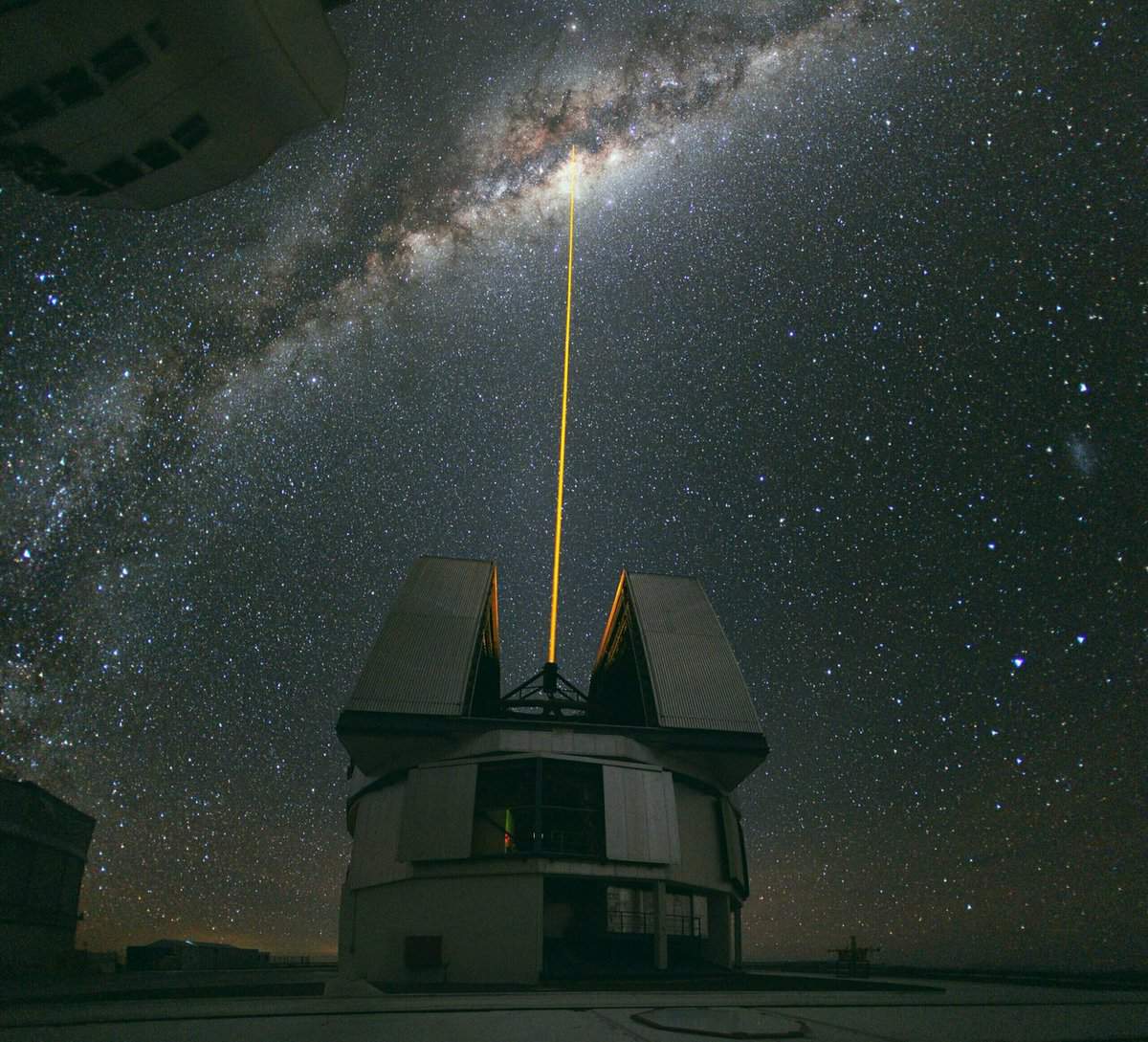The branch of science that examines the cosmos, the universe, and its composition, movement, spatial dimensions, genesis, and evolution of celestial bodies and systems is known as astronomy.
Derived from the ancient Greek word “astronomia,” astronomy can be translated as “the science of celestial laws.”
Astronomy encompasses the study of the Sun, Earth, other galaxies, planets within our solar system, stars, comets, asteroids, and meteorites.
The study of the universe emerged on our planet when humans began to contemplate and analyze the origins of humanity and the workings of the world. As early as the 6th century BC, individuals began to investigate the stars, and by 1500 BC, the first calendars and astronomical tables were created. Prominent astronomers such as Pythagoras and Galileo made significant contributions to the advancement of this field, positing that our planet is spherical in shape.
Astronomy can be categorized into five distinct areas:
– The branch that examines space objects as a whole is known as astrometry;
– The second field, called celestial mechanics, focuses on the laws governing the motion, mass, volume, and shape of celestial bodies;
– The third domain is concerned with theoretical astronomy, encompassing computer modeling and the creation of terrestrial representations of celestial bodies and systems;
– Astrophysics is the branch of astronomy that investigates the chemical composition and physical properties of celestial bodies;
– Archaeoastronomy is the fifth area of study, focusing on the history of the origin of celestial systems, objects, and the Universe.
Astronomers rely solely on observation as the foundation of their work. Nearly all current knowledge about celestial systems and bodies is derived from observations.
The work of astronomers involves the meticulous and arduous process of observing space objects and the Universe. It demands immense concentration, attention to detail, and consistency.
The objects being studied are located at a tremendous distance from observers, which cannot be measured even in millions of kilometers. Therefore, scientists have introduced their own unit of measurement – the astronomical unit – for studying objects in the solar system and other celestial bodies. The astronomical unit is defined as the size of the Earth’s large semi-major axis of its orbit, which is 140 million kilometers.
The field of astronomy and space exploration has always captivated humanity, regardless of the era. This field of study allows us to understand the laws of nature on Earth and explore the evolution of our world. The work, capabilities, and achievements of astronomers have wide-ranging applications in various areas of human activity, such as medicine, geology, history, biology, and geography.
Space science astronomy is a field of study that allows us to comprehend the various phenomena and situations that occur on our planet Earth.
Image for the Science Astronomy message
Contemporary subjects of interest
- Krylov Ivan Andreyevich Ivan Andreyevich Krylov was born into a impoverished family on February 2, 1769. During his childhood, he served a wealthy landowner. Unfortunately, Ivan Andreyevich did not have the means to receive a proper education.
- Decembrists The emergence of social changes in Russia is not surprising, as the country is located between two civilizations, resulting in a constant state of flux.
- The UNESCO World Heritage Sites represent the unique cultural and natural heritage of various countries and cities around the globe.
- Exploring the life and contributions of the renowned writer, translator, and literary figure V.A. Zhukovsky is a fascinating journey that showcases a literary revolution in Russia.
- Ivan Ivanovich Shishkin, the esteemed artist, was born into a merchant family in Elabuga, a city situated on the banks of the Kama River in the Republic of Tatarstan.
Categories
- Animal Kingdom
- Botany
- Ornithology
- Entomology
- Ichthyology
- Life Sciences
- Geography
- Various Topics
- Human Studies
- Historical Events
- Our Environment
- Physical Education
- Astronomy
- Environmental Science
- Physics
- Economics
- Festivals
- Cultural Studies
- Mathematics
- Music
- Computer Science
Cosmology
Cosmology is the field of science that focuses on studying the entirety of the universe. It relies on various fundamental physical theories such as the theory of gravitation, elementary particle physics, general relativity, and astronomical observations. Modeling plays a significant role in cosmology, where scientists construct theoretical models of the universe and seek observational data to validate their theories. Computers are essential in performing the necessary calculations. It is remarkable that models of the expanding universe accurately describe the actual universe.
Asteroids
Asteroids, also known as minor planets, are rocky objects that orbit the Sun. They are smaller than planets but larger than meteoroids. Asteroids are remnants from the early formation of our solar system, and they can be found in the asteroid belt, a region located between the orbits of Mars and Jupiter. These celestial bodies come in different shapes and sizes, ranging from small boulders to massive rocks. Scientists study asteroids to learn more about the history and composition of our solar system. By analyzing their composition, scientists can gain insight into the materials that were present during the formation of planets. Additionally, asteroids can pose a potential threat to Earth if their orbits bring them close to our planet. Understanding their trajectories and compositions is crucial for developing strategies to mitigate the risk of a potential impact.
Glossary of terms used on the website
Hadrons – also known as elementary particles (baryons and mesons), these particles are subject to strong interactions that help maintain the stability of atomic nuclei.
Antiparticles – these are electrically charged particles that have the same mass and spin as their corresponding particles, but have opposite electric charge, magnetic moment, and other similar characteristics. When particles and antiparticles collide, they annihilate each other, and they are also created in high-energy particle interactions.
Family of the Sun. Solar system
The solar system consists of the Sun, which is the central star, and a total of nine planets that revolve around it. These planets, in order of their distance from the Sun, are Mercury, Venus, Earth, Mars, Jupiter, Saturn, Uranus, Neptune, and Pluto. The last three planets, namely Uranus, Neptune, and Pluto, can only be seen from Earth with the help of telescopes. On the other hand, the rest of the planets are visible to the naked eye and have been known to mankind since ancient times.
Astronomy and Space Exploration
The study of stars is carried out through the field of astronomy (derived from the Greek words “astron” meaning star and “nomos” meaning law) – the scientific study of the structure and evolution of celestial bodies and their systems. This traditional scientific discipline has seen a revival in the 20th century, thanks to the rapid advancements in observational techniques such as reflector telescopes and radiation receivers (antennas). In 1974, the Soviet Union launched a 6-meter diameter reflector telescope in the Stavropol region, capable of collecting light millions of times more effectively than the human eye.
The importance of space science
Astrology: the fusion of physics and morality
At the core of Stoic cosmology resided the belief in an omnipresent and eternal world fire, which led to the concept of universal “sympathy”. This, in turn, laid the groundwork for the possibility of divination and prophecy. By viewing the “cosmic rotations” as the embodiment of the eternal and correct laws of the universe, and seeing the cosmos itself as a living and intelligent manifestation of the divine, the Stoics logically embraced astrology as the most significant and trustworthy form of divination. Astrology involved predicting the future through the observation of stars, planets, and celestial bodies (which were also considered divine: “Zeno attributes divine power to the stars…” (SVF I 165)).
Cosmology
The study of the universe as a whole is known as cosmology. Most cosmological theories are based on fundamental physical theories such as gravitation, elementary particle physics, general relativity, and astronomical observations. Scientists in cosmology commonly use modeling to construct theoretical models of the Universe and verify the accuracy of theoretical conclusions based on observational evidence. The use of computers enables the necessary calculations to be performed. It has been discovered that the actual universe is effectively described by models of an expanding universe.
Cosmology
In October 1967, the planetarium warmly welcomed its first visitors. At the heart of the hall, a unique planetarium called “Venus” from the Japanese company “GOTO” was installed on a special platform. There was a great demand from people wanting to marvel at the beauty of the night sky, with over 100,000 visitors per year. This is understandable since most individuals, especially those living in urban areas, are unable to experience the true starry sky due to obstructions such as buildings and city lights. At the end of each day, the planetarium apparatus was lowered into a shaft using a hoist and securely closed with a mechanical lid.
ESA considers science to be a central focus, as it stimulates creativity and results in advancement and economic growth. Additionally, it serves as a source of motivation for aspiring scientists and engineers, while fostering international collaboration and communication.
Exploring space science allows us to divert our attention away from our planet and towards the vast expanse of the stars and beyond. This field of study aims to provide solutions to the fundamental inquiries: how did our Earth and solar system originate and develop? What role do we play in the grand scheme of the universe? Where is our future headed? What are the origins of life and do we exist in solitude?
By examining other planets within our own solar system, we can attempt to place Earth within its proper context. The European Space Agency (ESA) has already dispatched a spacecraft to Earth’s nearest planetary neighbors, Mars and Venus, in order to comprehend why they have developed so differently. In the upcoming decade, we will also unravel the mysteries of Mercury, the innermost planet. Gas giants, particularly Jupiter, which possesses four prominent satellites, some of which could potentially harbor subterranean oceans, also play a crucial role in the evolution of our solar system. Gaining insight into the behavior of our parent star, the Sun, is another significant factor in unraveling our celestial origins. Additionally, as an increasing number of planets are being discovered around distant stars, comprehending our own cosmic vicinity has never been more imperative.
However, what about the origin of the universe itself? If we had the ability to “visualize” microwaves, the night sky would illuminate with the initial light emitted into space. This is the residual radiation from the Big Bang, the occurrence that initiated the Universe itself. Through our space science expeditions, we can acquire knowledge about the specifics of the earliest moments of the Universe, discover the very first celestial bodies and galaxies, and comprehend the structure of space and time. These remarkable space observatories might also offer us insights into the future destiny of our Milky Way galaxy and the Universe as a whole.
ESA’s space science missions grant us access to the most extensive science laboratory we have ever encountered: our Universe!
What is the reason for ESA’s involvement in space science?
ESA’s involvement in space science is driven by several factors. Firstly, space science is a crucial strategic asset for the agency. It allows ESA to maintain technological independence and stay at the forefront of scientific advancements. Additionally, space science plays a vital role in preserving and promoting European cultural identity. By conducting research and exploration in space, ESA showcases the capabilities and vision of Europe on a global scale.
Moreover, ESA’s involvement in space science is essential for supporting a science-based society. By collaborating with researchers from European countries, ESA facilitates the exchange of knowledge and expertise, enabling scientists to work on a global level within their respective specialties. This collaborative approach not only enhances national programs but also allows the best national approaches to be integrated into a common European approach, fostering innovation and progress in space exploration.
You have already shown your appreciation for this page, you can only express it once!
Welcome to STScI
About Us
Our Purpose
We assist mankind in exploring the vastness of the cosmos using state-of-the-art space telescopes and continuously expanding data archives.
WE FOSTER
ADVANCED SCIENTIFIC INQUIRY
We conceive, define, and oversee missions that provide cutting-edge research opportunities for the astronomical community.
WE INSPIRE THROUGH
INFORMATIVE KNOWLEDGE
We disseminate scientific understanding of the universe in ways that inspire, energize, challenge, and educate.
Latest News
Applications Now Open for the NASA Hubble Fellowship Program (NHFP)
The NHFP is currently accepting applications from postdoctoral scientists who are interested in conducting independent research that contributes to NASA’s astrophysics. The deadline for submitting applications is November 3, 2022.
For more information about this opportunity, please refer to the official announcement.
Capturing the Mysteries of the Universe: NASA’s Webb Telescope Reveals Dust and Structure in the Pillars of Creation
NASA’s Hubble Telescope Unveils Ghostly Image of Dust and Structure in the Pillars of Creation
New Image from NASA’s Hubble Telescope Shows Two Tails Following DART’s Impact
NASA’s Hubble Telescope Captures Image of Two Tails After DART’s Strike
Exploring the Early Universe: NASA’s Hubble Detects a Dense Cosmic Knot
NASA’s Webb Telescope Uncovers a Dense Cosmic Knot in the Early Universe
Unraveling the Secrets of the Universe’s Origins
Each individual cell holds a biochemical record spanning four billion years, chronicling the co-evolution of life on Earth. Our mitochondria, for instance, were once independent bacteria. Every component of the electron-transport chain…
Unraveling the enigma of dark matter with celestial creatures
Astronomers have only observed a mere 5% of the universe’s contents, which constitutes luminous (or baryonic) matter. The remaining 95% remains invisible, comprised of the elusive dark matter and dark energy…
Fall Colloquium Series
An abstract will be uploaded shortly.
© 2021 Scientific World serves as a repository of scientific information
Cosmology delves into the origins and evolution of the universe, exploring the development of space from the momentous Big Bang and even striving to model its future trajectory. This field of study encompasses various disciplines, including astrophysics, astronomy, geology, physics, and climatology.
When it comes to cosmology, scientists delve into the realm of exotic and unfamiliar ideas. They explore concepts like dark matter and dark energy, string theory, and the possibility of multiple universes. Unlike other branches of astronomy that focus on specific phenomena, modern cosmology aims to paint a comprehensive and wide-ranging portrait of the universe.
Study Material on Cosmology
The Evolution of Cosmology and Astronomy
The study of cosmology and astronomy has a rich history that has evolved alongside human understanding. Initially, the Earth was believed to be the center of the universe, with other celestial bodies either fixed in place or orbiting around it. However, in the 16th century, Nicolaus Copernicus introduced the heliocentric system, which challenged this view and proposed that we are just a small part of a much larger universe, situated far from the center. Copernicus was not the only scientist to contribute to the field of cosmology.
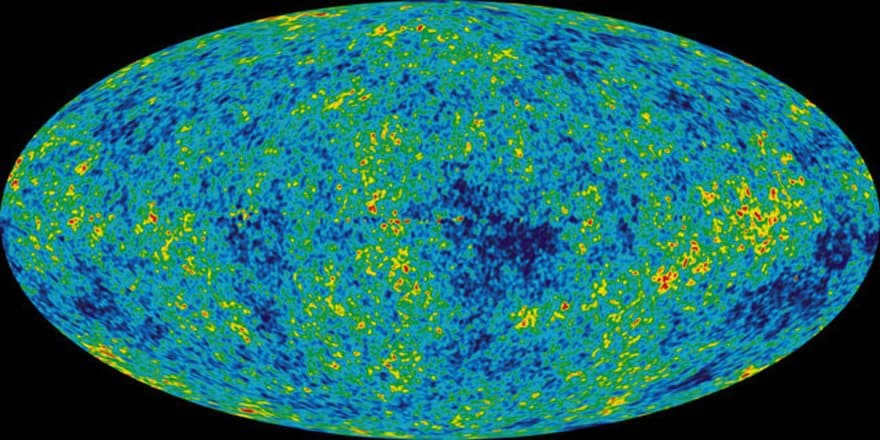
A visual representation of the observable universe
Edwin Hubble made a significant discovery when he observed a distant, hazy spot and determined that it existed beyond our own galaxy! Additionally, he deduced that these objects were actually galaxies moving away from us, indicating that the universe is not static but rather expanding (an expanding universe).
Renowned theoretical physicist Stephen Hawking holds the belief that the Universe possesses a definitive size and, consequently, an endpoint. However, this boundary will perpetually remain beyond our sight. This concept can be likened to our planet: one can circumnavigate it, but eventually return to the starting point. Hawking further postulates that the expansion will persist indefinitely until its eventual conclusion.
What came before the Big Bang?
In accordance with the theory of cosmology, the Big Bang marked the beginning of space. It is hypothesized that there may be alternative universes, yet our current limitations prevent us from directly observing them. Thus, at present, we can only assert that there was nothing preceding the Big Bang.
Where did this occurrence transpire?
Given that there was no preexisting state, there is no specific location for the Big Bang. It simply occurred.
Isn’t our position in the center of the universe if other galaxies are moving away from us?
No, that is not the case. If you were to find yourself in another galaxy, you would observe that the other galaxies are also moving away from that point. The universe can be compared to a balloon. When you inflate and blow up a balloon, none of the dots on its surface would be centered, they would all simply expand.
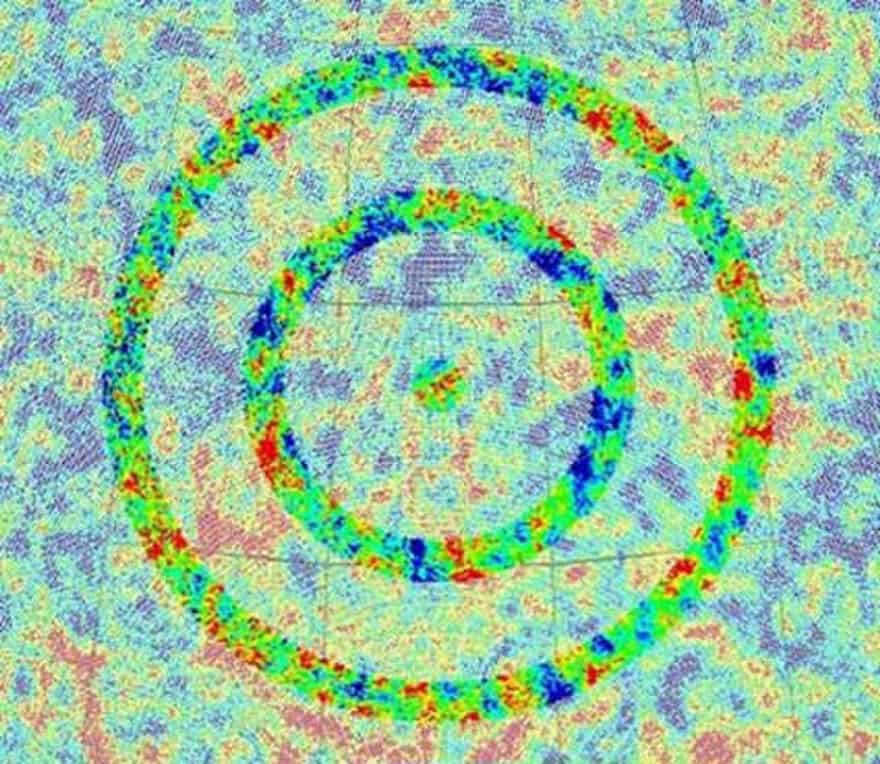

There are some who think that the circular patterns of ancient radiation suggest the existence of a universe that predates the Big Bang.
What is the age of the universe?
The age of the universe is estimated to be 13.7 billion years (+/- 100 million).
Is there a limit to the size of the universe?
The answer to this question lies in the density of the universe. Scientists have been able to determine a critical value that determines the fate of the universe. If the actual density of the universe surpasses this critical value, then the expansion of the universe will come to a halt and space will start to contract until it reaches its original state. On the other hand, if the density falls below this critical value, the universe will continue to expand indefinitely.
According to classical cosmology, space consisted of hydrogen and a small amount of helium after the Big Bang. The contraction of hydrogen under the influence of gravity led to the formation of structures. However, the exact process of this formation remains unknown to scientists. It is possible that stars were the first to form and later came together to create galaxies. Another possibility is that massive galactic clusters served as the starting point for the emergence of stars. The video available on our website provides insights into the foundations of modern cosmology and the development of its theories and principles. Feel free to watch it online for free.
The cosmos. There is so much tantalizing and interesting about this word. The mesmerizing views of space fascinate and make it difficult to look away, and knowledge about space truly interests both adults and children. Today, I would like to dedicate my article to the cosmos, providing a space-themed quiz for kids and older children, as well as for adults. Everyone will find questions they enjoy, and I am certain that they will learn a plethora of new information.
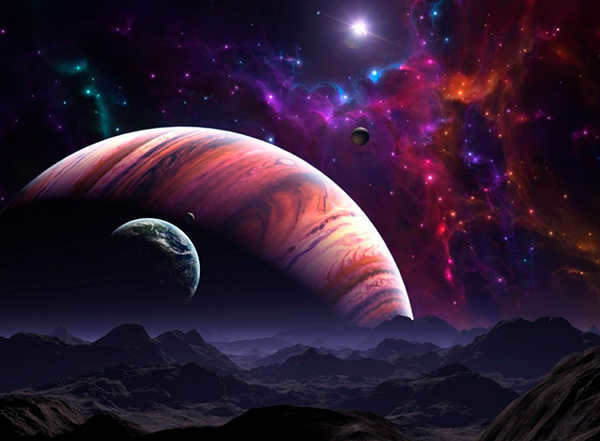
What is a quiz?
The quiz is a popular format used in educational and school programs. It offers a fun and engaging way to present information, making it easier for both children and adults to digest and remember. In a quiz, participants are required to select the correct answers to a series of questions. Quizzes are often organized by subject, such as space quiz, and may also be categorized according to age groups.
If you happen to be an educator, when creating a space-themed quiz, it is essential to consider the game setting and ambiance. Kids will enjoy not only being divided into teams but also forming space rocket crews, embarking on an imaginary space expedition together, and even encountering extraterrestrial beings. To incentivize correct answers, prepare rewards in the form of tokens resembling stars, planets, or even amusing aliens. By employing a game format, you will not only assist children in acquiring valuable new knowledge but also create a delightful and uplifting experience.

Quiz on Outer Space for Children
A quiz designed for preschoolers on the subject of outer space should consist of straightforward yet captivating queries. Utilizing visual aids such as images and illustrations can aid in engaging children as they attempt to identify the depicted objects and respond to the accompanying inquiries. Incorporating riddles into the quiz can also be fitting for this age group, as young children eagerly enjoy participating in such space-themed challenges.
Questions about space for preschoolers:
- A bright round object appeared from outside the window, accompanied by hopping rabbits. What could it be? (The Sun).
- During the night, a pale-faced celestial body can be observed in the sky… (The Moon).
- What takes off into space quickly, resembling a comet… (A Rocket)
- When we look through the window, what do we see shining brightly?… (The Sun)
- Golden peas are thrown into the night sky. (Stars).
- This planet revolves around the sun, covered in forests and mountains. Glittering seas and fields can be seen. It is known as… (Earth).
- What is the name of the equipment worn by astronauts? (A spacesuit)
- The rocket has a driver who enjoys experiencing weightlessness. In English, they are called “astronauts”, and in Russian… (cosmonaut).
- To examine the stars closely and become friends with them, and to observe the Milky Way, you need a powerful… (telescope).
If you’re dealing with older preschoolers, you can ask them the following questions regarding space:

- When is the day of cosmonautics celebrated? (April 12, 1961)
- Why is this day called that? (It marks the first human flight into space)
- Which animals have been to space? (monkeys, rats, dogs)
- Which animals flew to space before humans and returned safely? (Squirrel and Strelka)
- The initial person to venture into space at great speed was a brave Russian, our cosmonaut … (Gagarin).
- What was the name of the man who first went into outer space? (Alexei Arkhipovich Leonov).
- Who was the first woman to fly into space? (Valentina Tereshkova).
- How do people move in space? (They experience weightlessness)
- Which planets are familiar to you? (Jupiter, Saturn, Venus, Mars, Uranus, Mercury, Earth, Neptune)
- What qualities should an astronaut possess? (Strength, courage, endurance, talent, intelligence, agility)
- Who was the individual who developed an interest in and pioneered the field of space exploration? (Tsiolkovsky)
For older children (in elementary school), the subsequent inquiries about outer space are appropriate.
Interesting Space Inquiries for Kids
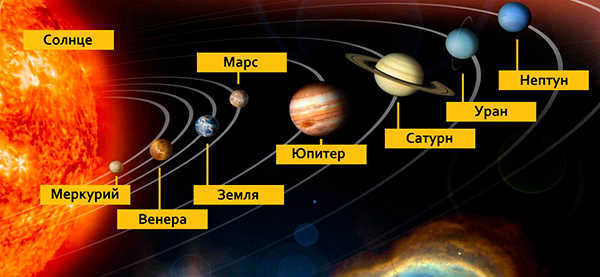
Students have the option to take a space quiz on their computers or answer questions from their teacher or parent. We provide an interactive version of the “Journey through the Solar System” quiz for you to test your knowledge and ask space-related questions to your students:
Embarking on a Journey through the Solar System
Are you ready to have fun and gauge your understanding of space? We have a straightforward yet captivating space quiz for you! Answer the questions, expand your knowledge, and solidify your understanding!
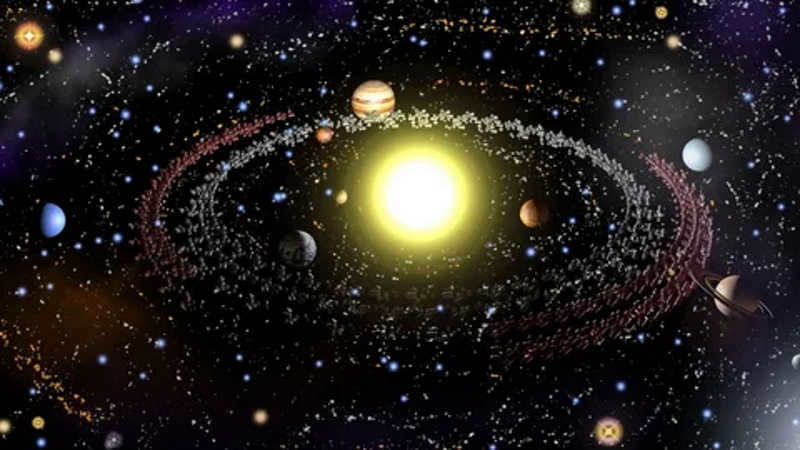
Cosmogony is a scientific discipline that investigates the birth and evolution of celestial objects and their systems, encompassing stars and star clusters, galaxies, nebulae, the solar system, and all its components – the Sun, planets (including Earth), their moons, asteroids (or minor planets), comets, and meteorites. The examination of cosmogonic phenomena represents a fundamental objective of astrophysics.
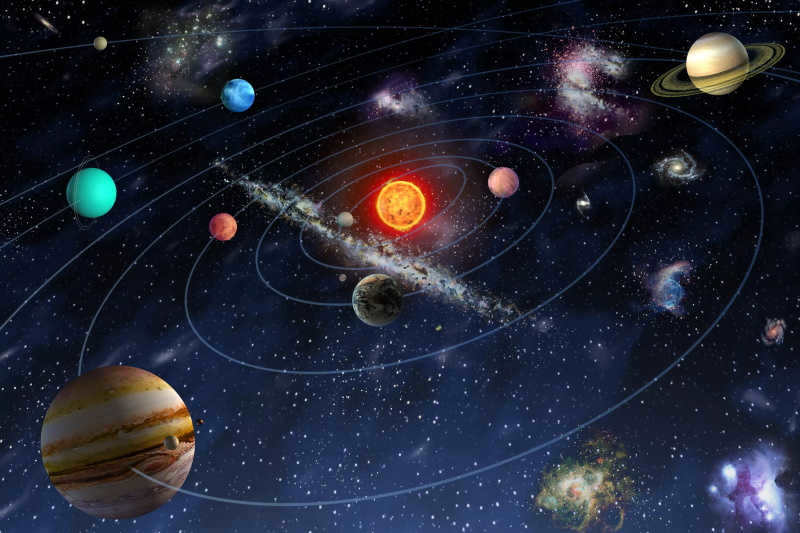
In the 1940s, following the rejection of the Jeans hypothesis, planetary K. reverted back to the traditional concepts put forth by Kant and Laplace regarding the origins of planets from dispersed matter. Currently (in the 1970s), it is widely accepted that the majority of planets formed through the accumulation of solid material, while Jupiter and Saturn also incorporated gaseous matter. It seems that the gas-dust cloud that previously occupied the equatorial plane of the Sun extended all the way to the current boundaries of the Solar System.
According to most astronomers, the prevailing concept regarding the formation of the Sun is that it originated from a compressing and rotating nebula. They believe that during the final stage of compression, a protoplanetary cloud of certain mass separated from this nebula due to centrifugal force [F. Hoyle (UK), A. Cameron (USA), E. Schatzman (France)]. However, unlike Laplace, who viewed this separation as purely mechanical, modern theories take into account the effects of the Sun’s magnetic field and corpuscular radiation. These factors have allowed us to explain the distribution of interstellar cloud dust (ICD) between the Sun and the planets within the framework of hypotheses proposing the simultaneous formation of the Sun and the protoplanetary cloud. Additionally, there have been hypotheses suggesting that the already formed Sun captured matter from its surroundings.
If the original protoplanetary cloud was initially hot and composed solely of gases, the cooling process resulted in the formation of solid dust particles. Initially, the least volatile materials such as silicates and iron condensed, followed by the condensation of increasingly volatile substances. The inner region of the protoplanetary cloud was heated by the Sun, allowing for the formation of non-volatile, primarily stony dust particles. In contrast, the cold outer region saw the condensation of volatiles. Despite the cloud’s opacity due to the presence of dust, which contributed to the extremely low temperature of the outer zone, the most volatile substances, hydrogen and helium, were unable to condense even in that area.
If, however, the original temperature of the protoplanetary cloud was low and the dust particles primarily consisted of volatile materials, they could have endured in the colder outer region of the cloud. Meanwhile, in the inner region, the volatiles would have vaporized, leaving behind only small rocky remnants.
In the cosmic (solar) matter, there is a greater abundance of volatile substances compared to non-volatile ones. As a result, there must have been a significant contrast not only in the composition but also in the overall quantity of dusty matter between the inner and outer zones. Consequently, these zonal disparities ultimately affected the composition and masses of the Earth-like planets and gas giants.
The research on the formation of planets from the protoplanetary cloud has been extensively conducted by O. Yu. J. Schmidt and his colleagues. They have proposed a two-stage process for this formation. In the first stage, which is estimated to have lasted for less than 10^6 years, numerous “intermediate” bodies with sizes of hundreds of kilometers were formed from the dust component of the cloud. kilometers. The second stage, lasting approximately 10^8 years, involved the accumulation of planets from the swarm of these “intermediate” bodies and their fragments. It is worth noting that in the case of the most distant planets such as Uranus, Neptune, and Pluto, whose matter was dispersed in vast ring regions, the second stage might have lasted for about 10^9 years. Notably, during the main phase of accumulation, the largest planets, namely Jupiter and Saturn, not only absorbed solids but also gases.
Various hypothetical variations of the process of cloud formation result in different variations of the initial stage. “Intermediate” bodies could have formed either from the accumulation of dust into a thin disk and the subsequent breaking up of this disk into denser regions, or from the aggregation of dust particles, i.e., their adhesion.
The process of planet formation from the swarm of “intermediate” bodies is largely independent of the method by which they are formed. Initially, these bodies moved along circular orbits within the plane of the dust layer from which they originated. As they grew, they merged with one another and absorbed the surrounding scattered material, which consisted of remnants from the collisions between these “intermediate” bodies at high relative velocities. The gravitational interaction between these bodies, which increased as they grew, gradually altered their orbits, causing their average eccentricity and inclination to the central plane to increase. Some of these “intermediate” bodies managed to break free during the growth process and ultimately became the embryos of future planets. As many bodies merged to form planets, the individual orbital properties of the merging bodies were averaged out, resulting in nearly circular and coplanar orbits for the planets. By analyzing the process of planet formation from solid bodies, O. J. Schmidt was able to provide insights into the origins of the planets’ direct rotation and the law governing their distances from one another.
The growth of the Earth group planets came to a halt once they had assimilated nearly all of the solid material within their respective orbits (with the exception of Mars, which may have absorbed some matter from its “feeding zone” before being intercepted by the massive Jupiter). However, the growth of the giant planets halted when they expelled all of the “intermediate” objects and their remnants, along with various gases (the energetic particle radiation emitted by the young Sun likely played a significant part in dispersing these gases).
Origins of the Stars
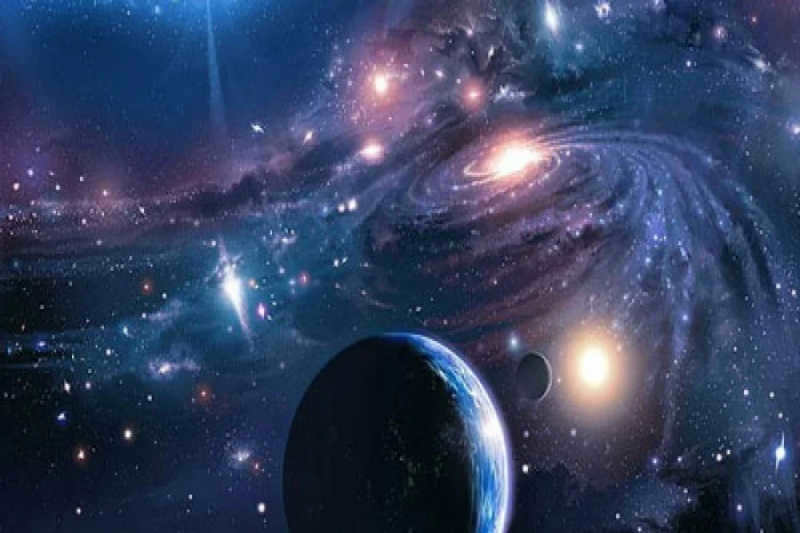
In stars with a slightly higher initial mass, the process of evolution takes a different path. These stars experience a rise in core temperature to 120-140 million degrees Celsius, triggering the conversion of helium to carbon and the synthesis of heavier elements at even higher temperatures. This release of energy causes the star’s core to expand. As a result, the star’s position on the Hertzsprung-Russell diagram shifts in a complex manner, moving between the giant branch and the left side of the main sequence. Eventually, after losing about half of its mass, the star transforms into a white dwarf.
Stars that are even more massive (up to 2 times the mass of the Sun) transition from the main sequence to the area of red supergiants. Within their cores, heavier elements are synthesized, all the way up to the densely packed nucleus of iron atoms. As the temperature continues to rise, the iron nuclei transform into nuclei of other elements. However, instead of releasing energy, the core of the star absorbs it, and the compression does not lead to an increase in its temperature. If the mass of the nucleus exceeds 1.4 times the mass of the Sun, the pressure of the degenerate gas cannot counterbalance its weight. As a result, the star continues to contract until the density of matter inside it becomes comparable to the density of atomic nuclei. Under the tremendous pressure, electrons combine with nuclei to form neutrons. These neutron stars have a radius of approximately 10 kilometers. 10 kilometers. They are known as pulsars. As the star undergoes compression, some of the gravitational energy released is transferred to the surrounding shell, which is expelled at speeds of several thousand kilometers per second. km/sec; This explosive event is known as a Type II supernova. Type I supernovae, on the other hand, occur at the end of the evolution of lower-mass stars.
A collapsed star like this can only be detected through its gravitational pull or the radiation emitted by the gas falling onto it. The lifespan of stars is heavily influenced by their mass. For the Sun, it lasts around 10 billion years, while for O-class stars, it is only a few million years (as their hydrogen reserves are quickly depleted). As a result, all the hot stars we observe are young and recently formed. The clustering of young stars in clusters and associations indicates that stars form in groups. The connection between these groups and the interstellar medium, particularly the dark band of compressed gas at the edge of the spiral branches, along with other pieces of evidence, has led to the idea that stars are formed through the compression and fragmentation of large gas and dust clouds into separate clumps, which then continue to contract due to their own gravity.
In the early phase of evolution (prior to reaching the main sequence on the Hertzsprung-Russell diagram), a star emits light as a result of gravitational compression. During this period, the positions corresponding to the stars are located above and to the right of their eventual position on the main sequence. T Tauri stars are examples of young stars with intermediate mass that have not yet fully compressed. On the other hand, low-mass stars require billions of years to undergo compression, with flaring UV Kita stars being representatives of such contracting stars.
The magnetic field plays a crucial role in the process of star formation. As a result of the gravitational forces at work, interstellar gas moves along the lines of force and gathers together from far distances, forming dense complexes. Once the mass of these complexes reaches a certain point, they become compressed along the force lines, leading to an acceleration in their rotation. However, further compression can only occur if some of the mass is transferred to the surrounding gas. This transfer is made possible through the twisting of the force lines, which creates tension and allows for the rotation to be transferred to the external medium.
Origin of the galaxy
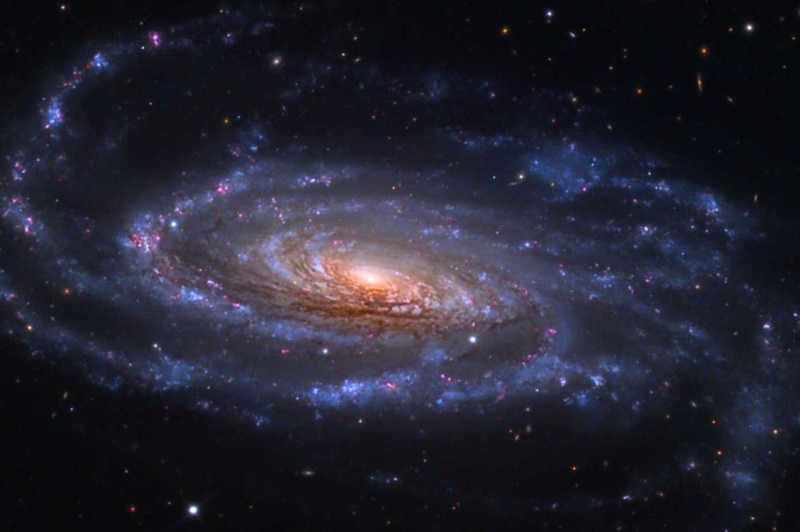
The stars and the interstellar medium are two stages in the development of galactic matter. Over time, the interstellar medium will deplete and young stars will vanish from the Galaxy. The majority of mass will gather in low-mass stars that undergo slow evolution, as well as in the remnants of stars such as white dwarfs, neutron stars, and more massive remnants that are in a state of collapse.
Lit: Schwarzschild M., The Structure and Evolution of Stars, translated from English, Moscow, 1961; Frank-Kamenetsky D. A., Physical Processes within Stars, Moscow, 1959; Kaplan S. A., Physics of Stars, 2nd edition, Moscow, 1970; Problems of Modern Cosmogony, edited by V. A. Ambartsumian, A. Ambartsumian, 2nd edition, Moscow, 1972.
Cosmogonic Tales
Cosmogonic tales (derived from the Greek word κοσμογονία, meaning “birth” or “creation”) are stories that explain the origins of the world, specifically the emergence of the universe from chaos. These tales serve as the central narrative in many mythologies and encompass a wide range of origin myths. Additionally, there are anthropogonic tales that explore the creation of the first human beings.
Cosmogonic tales and cosmological legends hold a unique place within the realm of mythopoetic worldviews, as they provide insight into the circumstances surrounding human existence and shed light on the formation of the universe.
Overview

The act of completing the creation process is often accompanied by the departure of the creator from the affairs of the universe and humanity that he has created. This marks the transition from mythological time, which corresponds to the time of the initial creation, to historical time. Eschatological myths, which describe the end of the world, typically present this event in the opposite order to the cosmogonic myths that describe the creation of the world.
Academician N. I. Kareev observed that cosmogonic myths have had a significant influence on the initial answers to the fundamental question of the origin of all things. These myths provided a framework for understanding the origins of the universe and humanity until the development of philosophy and science offered new perspectives on this matter.
There are different types of cosmogonic myths that can be classified as follows:
- In Egyptian mythology, the god-creator Pta uses the power of thought and word to create gods and people, making the main gods embodiments of Pta himself.
- The supreme god either plunges into water or sends waterfowl or amphibians to the depths of the initial ocean to retrieve a piece of land that will become the foundation of the entire world.
- The world is created through a process of separation:
- The separation of Heaven and Earth, known as the World Parents;
- The separation of the original formless mass, known as Chaos;
- The creation through the division of the First Sacrifice;
- The division of the cosmogonic Egg into two parts.
Cosmogony and Cosmology
Cosmology is the examination of the structure and modifications in the current cosmos, while the scientific disciplines of cosmogony address the query of the genesis of the cosmos. Observations of our present cosmos may not only enable us to make predictions about the future, but they also offer hints to events that occurred in the far past when … the universe was just commencing. As a result, the work of cosmology is grounded in the astrophysics of contemporary observations, and cosmogony does not duplicate but complements astrophysics.
Cosmogony and cosmology are two distinct fields of study in understanding the universe. While cosmology focuses on the overall nature and existence of the universe, cosmogony specifically examines its origins and formation. It is important to note that there can be some overlap and confusion between the two terms. For instance, when discussing the cosmological argument for the existence of God, one is referring to cosmogony rather than cosmological concepts.
In scientific practice, there is a clear distinction between cosmological and cosmogonic ideas. Physical cosmology is a scientific discipline that aims to explain all relevant observations in relation to the development and characteristics of the entire Universe. However, questions regarding why the universe behaves in a certain way are considered beyond the scope of science. These questions often rely on extrapolation from untested or indirectly confirmed hypotheses, as well as philosophical or religious beliefs.
Astronomy is the scientific study of objects and phenomena in space. It delves into all aspects of the universe beyond our own planet Earth: including stars, planets, galaxies, black holes, cosmic rays, and various other objects and phenomena.
Astronomy encompasses the practice of making observations, conducting theoretical calculations, creating models, and performing experiments to investigate the physical and chemical processes occurring in outer space. This field of science has a long and storied history and is currently experiencing rapid growth and development.
Recommended:
Why is astronomy important for astrologers?
While astrology is often regarded as fiction and not a scientific discipline, it still holds practical benefits. Although astrology is based on mythology, which is essentially fictional, it does not diminish its practical value.
For astrologers, understanding the speed, arrangement, and movement of planets in space is crucial. This knowledge provides them with a broader perspective and prepares them for new research opportunities.
This article will explore several key aspects of astronomy, including the Earth’s position, the Sun, other planets, their characteristics, and the intricacies of the surrounding cosmos.
What is space?
Space is an immense expanse filled with matter and energy. It consists of a variety of entities including celestial bodies like stars, planets, galaxies, black holes, gases, dust, dark matter, and dark energy.
Stars are predominantly composed of hydrogen and helium, with trace amounts of other elements. Planets, on the other hand, are made up of rocks, metals, gases, and ice. Galaxies are vast conglomerations of stars, gases, and dust. Black holes, on the other hand, are regions in space with extraordinarily high densities, resulting from the collapse of massive stars. Dark matter and dark energy, which remain largely enigmatic to us, represent mysterious forms of matter and energy.
Furthermore, the cosmos is permeated by diverse types of radiation, such as electromagnetic radiation, cosmic rays, X-rays, and gamma rays.
The Galaxy of the Milky Way
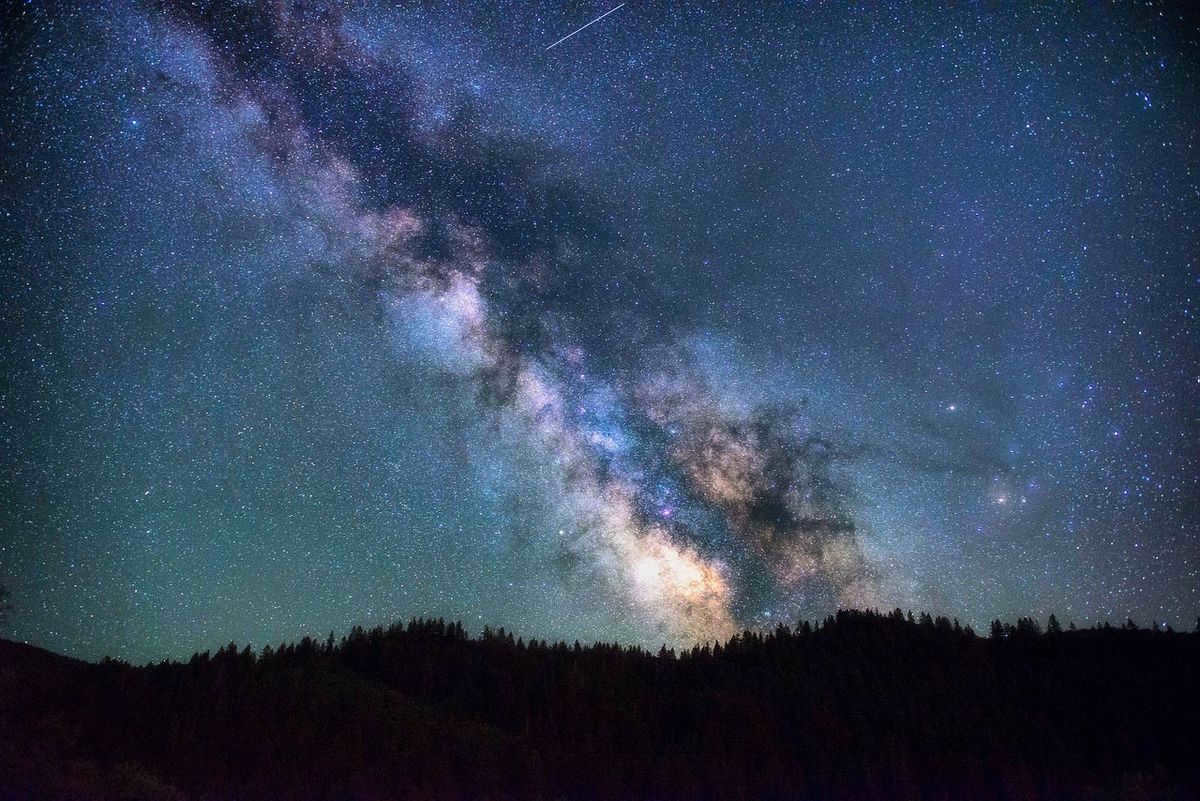
The Milky Way is the home of our solar system. It is an immense collection of stars, gas, and dust, spanning a distance of approximately 100,000 light years.
The Milky Way boasts a spiral shape with a stretched center. The galaxy measures approximately 100,000 light years in diameter and around 1,000 light years in thickness. There are an estimated 200 billion stars within the galaxy, and these are just the ones visible from our perspective.
Located at the heart of the Milky Way lies an immense black hole, boasting a mass estimated to be 4.1 million times that of our Sun. Enveloping this black hole is the galactic nucleus, home to countless star clusters. Among these clusters, known as the Galactic Center, can be observed in the night sky within the constellation of Sagittarius.
Furthermore, the Milky Way possesses multiple satellite galaxies, which exist within its gravitational influence and orbit around it. The most renowned of these satellite galaxies are the Small and Large Magellanic Clouds, visible to those residing in the southern hemisphere of our planet.
Ongoing investigation into the Milky Way persists, with scientists continuously unearthing novel and astonishing revelations about our galaxy.
The Mysterious Phenomenon of Black Holes
Within the vast expanse of the Milky Way galaxy, a multitude of black holes exist, each possessing unique characteristics. However, one particular black hole situated at the heart of the galaxy has garnered significant attention and has come to be known as the Supermassive Black Hole (SMH).
Positioned approximately 25,000 light years away from Earth, in the direction of the constellation Sagittarius, this enigmatic black hole has captivated the imaginations of scientists and astronomers alike.
With a mass surpassing 4 million solar masses and a colossal diameter of approximately 44 million kilometers, the Supermassive Black Hole (SMH) possesses a gravitational force so intense that not even light can escape its clutches. This point, referred to as the “event horizon,” marks the boundary beyond which the gravitational pull becomes insurmountable.
Systems
Rephrase the text, making it unique, using the English language and preserving the HTML markup.
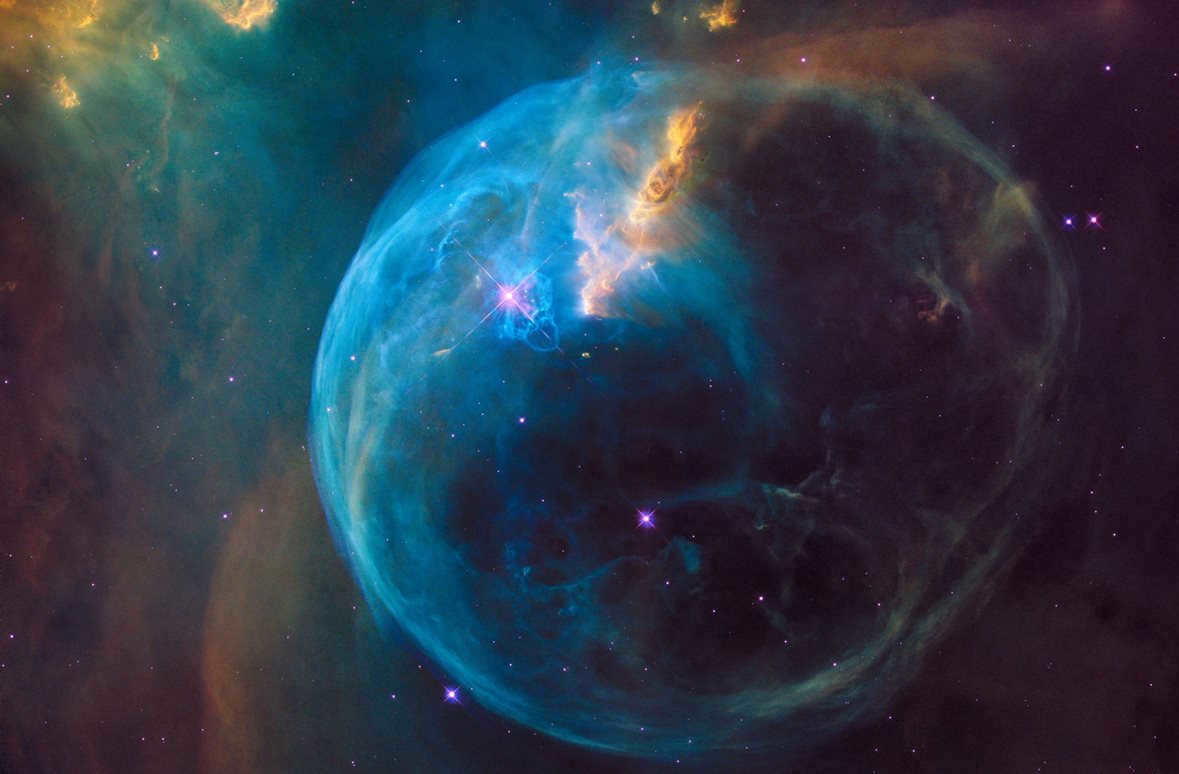
In the Milky Way, there is a wide range of different systems, such as individual stars, double and multiple star systems, clusters of stars, galaxies, and nebulae. Some of the most well-known systems in the Milky Way include:
- The Orion region, which consists of a star cluster and nebula, is located approximately 1,350 light-years away from Earth.
- The Galactic center, which is situated about 25,000 light-years away from Earth, is another notable system within the Milky Way.
- The Alpha Centauri star system, which is the closest star system to our solar system, is approximately 4.37 light-years away.
- The Magellanic Clouds, which are the two closest galaxies to the Milky Way, can be observed in the southern hemisphere with the naked eye. They are considered satellites of our galaxy.
- Located approximately 444 light-years from Earth, the Pleiades is a star cluster consisting of over 1,000 stars.
These examples are just a small selection of the numerous systems that can be observed within the Milky Way.
The order of the brightest stars in the Milky Way depends on how their brightness is calculated. One common method is to measure their apparent stellar magnitude through visual observation. Here is a list of the brightest stars in the Milky Way, arranged by their apparent stellar magnitude:
Apparent Stellar Magnitude (often represented as “m”) is a measurement used in astronomy to determine the brightness of celestial bodies on the celestial sphere. It takes into account the visual perception of a star’s brightness in the sky, as well as factors like its distance from Earth, temperature, and radius. A lower apparent stellar magnitude indicates a brighter star in the sky.
- Sirius (α Canis Majoris) has an observed stellar magnitude of -1.46.
- Canopus (α Carinae) has an observed stellar magnitude of -0.72.
- Arcturus (α Bootis) has an observed stellar magnitude of -0.05.
- Vega (α Lyrae) has an observed stellar magnitude of 0.03.
- Capella (α Aurigae) has an observed stellar magnitude of 0.08.
- Rigel (β Orionis) has an observed stellar magnitude of 0.12.
- Procyon (α Canis Minoris) has an observed stellar magnitude of 0.38.
- Ahernar (α Eridani) has an observed stellar magnitude of 0.46.
- Betelgeuse (α Orionis) has an observed stellar magnitude ranging from 0.45 to 1.3 (as a non-permanent star).
It is noteworthy that there are numerous other stars in the Milky Way that, while not as luminous, are significant objects for astronomical studies.
The Solar System
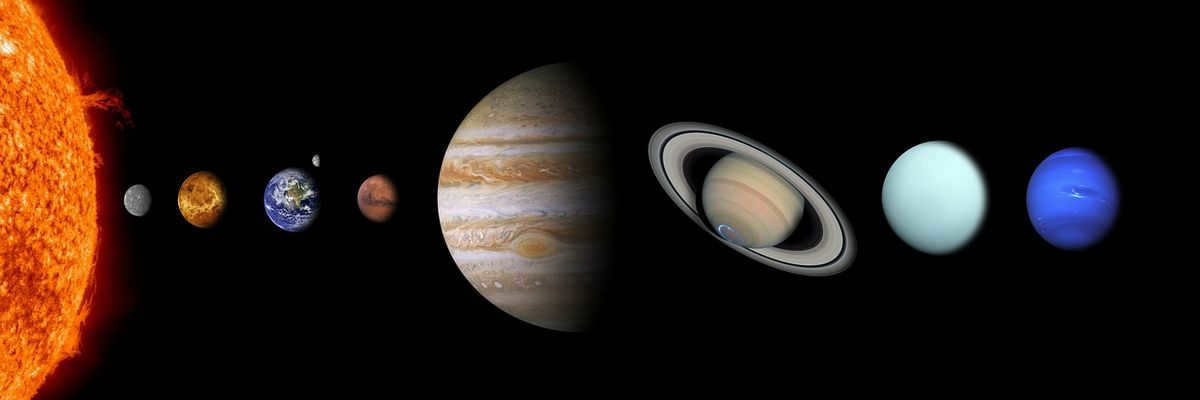
The cosmic system is an immense complex comprising of the Sun, eight planets (Mercury, Venus, Earth, Mars, Mars, Jupiter, Saturn, Uranus, and Neptune), the dwarf planets Pluto and Eridus, as well as entities like asteroids, comets, meteors, their satellites, and numerous other celestial bodies.
The cosmic system is of substantial size – it is estimated to measure approximately 100 astronomical units (1 astronomical unit being the distance from Earth to the Sun, which is approximately 149.6 million kilometers). Thus, even at the speed of light, traversing from one end of the cosmic system to the other would require numerous years.
Furthermore, the Local Group of galaxies encompasses approximately 54 galaxies, and the Solar System is currently in motion within this group. Its velocity within the group is estimated to be around 630 kilometers per second. Its trajectory is directed towards the constellation of Canis Major.
The Solar System’s movement in space does not significantly impact its operations or life on Earth.
Gravity is the force responsible for keeping the solar system intact by attracting all its objects. Positioned at the center of our solar system is the Sun, the most massive entity, which governs all the movements within our solar system.

